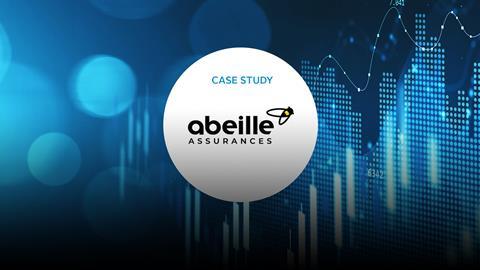ORGANISATION DETAILS
Organisation: Abeille Assurances (Aéma Groupe)
Signatory type: Asset owner
HQ country: France
Abeille Assurances is a French insurance company that forms part of Aéma Groupe, a mutual insurance group in France with more than 11 million policyholders. We have committed to align our investment portfolio with a net-zero emissions trajectory by reducing its carbon intensity by 25% over five years compared to a 2019 baseline. Meeting this target and setting a new 2030 target required a robust and transparent framework to project, monitor, and optimise our portfolio’s carbon footprint over 2022-2030 without negatively impacting the portfolio risk-return profile. In addition, we use ESG scores, including biodiversity scores, as portfolio constraints.
As part of the framework, we model the annual reduction pathway for each portfolio constituent based on a decision tree with four primary nodes, each one reflecting available investee carbon intensity reduction pathways (e.g., from self-declared targets to SBTi targets). We can also revalue the portfolio on an annual basis using climate-aware market assumptions and calculating the associated carbon intensity and yield. We also calculate a Transition Risk Indicator, which is a combination of a static and forward-looking analysis to assess whether an issuer is likely to transition towards a greener business model and will therefore reap the benefits of the transition. This new framework enables us to optimise the return of our portfolio under climate and ESG constraints whilst focusing our investments on the green leaders and the companies that are transitioning, thus helping us to focus our engagement activities.
Why this approach?
Previously we lacked the tools and processes to actively measure the forward-looking carbon footprint of our investment portfolio and the impact of the various action levers we could use (i.e., sector allocation, security selection, divestment) on the portfolio’s risk, return, and ESG profile. Before having such a tool, it was challenging to commit to a carbon emission reduction target and to implement it without considering potential adverse impacts and opportunities. We had to create a process to link science-based Paris-aligned decarbonisation targets to the way we decarbonised our own investment portfolio. This would enable us to have an impact on real-word carbon emissions.
Also, we were not able to actively monitor investees’ carbon profiles and their ability to transition to greener business models. We lacked forward-looking climate data to actively engage with our investee companies about aligning to net-zero pathways. Finally, our strategic asset allocation process did not factor in carbon intensity and ESG data. We aimed to create a climate/ESG-aware strategic asset allocation process, as it was not sufficient to optimise the portfolio return based only on a risk budget.
We do not seek to divest our most carbon-intensive assets to meet our net-zero targets, as this would not necessarily have any impact on real-world carbon emissions. Our ambition is to engage and finance companies to help them transform their business models and contribute to a less carbon-intensive world. That is why we need a robust model and adequate metrics.
The approach in practice
Our approach is extremely valuable for our investment management process. By using top-down and bottom-up modelling tools, we are able to more closely and proactively monitor the carbon profile of our investments, set portfolio level decarbonisation targets, and identify leading or underperforming companies with respect to the climate transition. We can do this at a granular level while assessing the risk, return and ESG, including biodiversity, performance of the portfolio over a ten-year time horizon.
We learned that two key levers can be relied on to meet our net-zero target and to become a leading advocate of the just transition.
The first lever consists of assessing the prospective carbon profile of our investment portfolio through the use of various investment scenarios, including active stock picking, small to large shifts in sector allocation, and ultimately, if engagement fails, divestments. Our analysis looks at our investment portfolio carbon intensity reduction pathways and their corresponding investment returns according to four investment approaches. The findings suggest that we could materially decrease the carbon intensity of the investment portfolio without impacting its return or ESG score over the period 2022-2030. Our model also provided valuable information in terms of how much of the investment portfolio carbon reduction target could be achieved through investee actions, versus our own internal management actions.
The second lever is stewardship. Using our transition risk indicator metric, we are able to identify investment opportunities and, crucially, investment laggards on which we should focus our engagement efforts. Dialogue and engagement can support investee companies in shifting their business models towards more sustainable pathways. Our analysis showed the split of our investees, according to our transition risk indicator metric, across two main categories. One is the green category, which includes companies that are investing in even greener business models. The other is the brown category, which includes companies that are lagging in adapting their business models to the climate transition. By doing this, we identified the companies on which we need to focus our engagement, the companies we should remain invested in, and ultimately companies we should divest from.
We learned that we cannot effectively decarbonise the investment portfolio without thorough bottom-up company-level analysis. This is because portfolio decarbonisation needs to be achieved through investment in firms offering climate solutions, not only through eliminating carbon-intensive companies from the investment portfolio.
Applying this methodology allowed us to increase our awareness of, and sensitivity to, the decarbonisation levers (investment decisions and engagement actions) at our disposal.
Next steps
Although our methodology is robust, it could be improved through the application of more granular macro-economic scenario analysis and climate-related assumptions within the overall climate investment framework. The transition risk metric is scalable and can be replicated actively throughout the entire investment universe. We believe that these types of forward-looking approaches will become mainstream in the near future, as investors develop holistic and rigorous approaches to aligning their investment portfolios with the net-zero goal.












